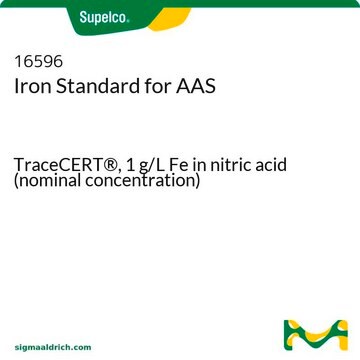27602
Caffeine
anhydrous, tested according to Ph. Eur.
Sinónimos:
Coffeinum, 1,3,7-Trimethylxanthine
About This Item
Productos recomendados
grado
anhydrous
Nivel de calidad
Agency
EPA 1694
USP/NF
tested according to Ph. Eur.
formulario
powder
mp
234-236.5 °C (lit.)
solubilidad
H2O: soluble 18.7 g/L at 16 °C
aplicaciones
environmental
cadena SMILES
CN1C(=O)N(C)c2ncn(C)c2C1=O
InChI
1S/C8H10N4O2/c1-10-4-9-6-5(10)7(13)12(3)8(14)11(6)2/h4H,1-3H3
Clave InChI
RYYVLZVUVIJVGH-UHFFFAOYSA-N
Información sobre el gen
human ... ADORA1(134) , ADORA2A(135) , ADORA2B(136) , ADORA3(140) , PDE4B(5142)
mouse ... Adora2b(11541)
rat ... Adora1(29290) , Adora2a(25369)
¿Está buscando productos similares? Visita Guía de comparación de productos
Aplicación
Acciones bioquímicas o fisiológicas
Palabra de señalización
Warning
Frases de peligro
Consejos de prudencia
Clasificaciones de peligro
Acute Tox. 4 Oral
Código de clase de almacenamiento
11 - Combustible Solids
Clase de riesgo para el agua (WGK)
WGK 1
Equipo de protección personal
dust mask type N95 (US), Eyeshields, Faceshields, Gloves
Choose from one of the most recent versions:
¿Ya tiene este producto?
Encuentre la documentación para los productos que ha comprado recientemente en la Biblioteca de documentos.
Los clientes también vieron
Nuestro equipo de científicos tiene experiencia en todas las áreas de investigación: Ciencias de la vida, Ciencia de los materiales, Síntesis química, Cromatografía, Analítica y muchas otras.
Póngase en contacto con el Servicio técnico




